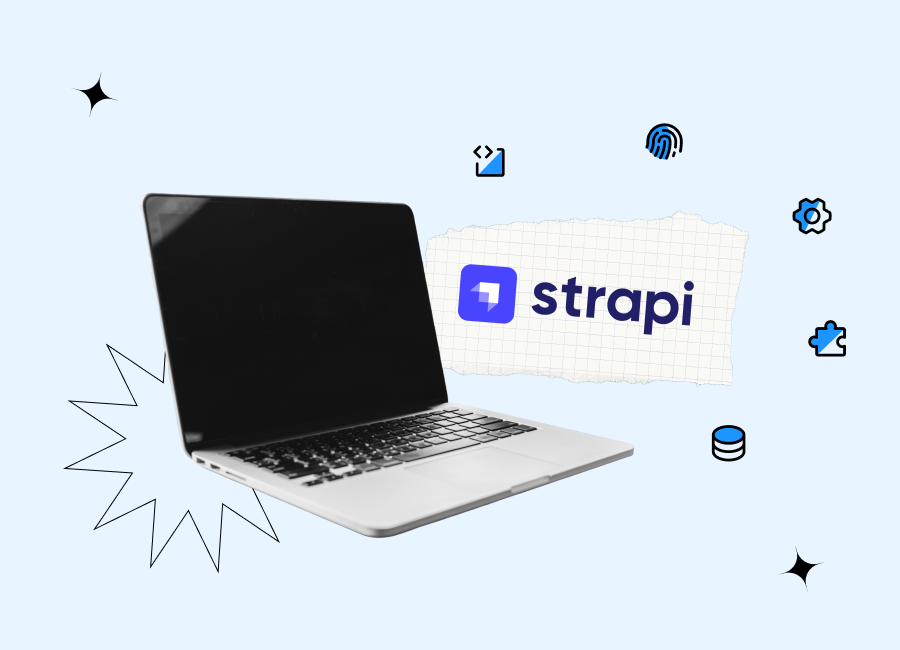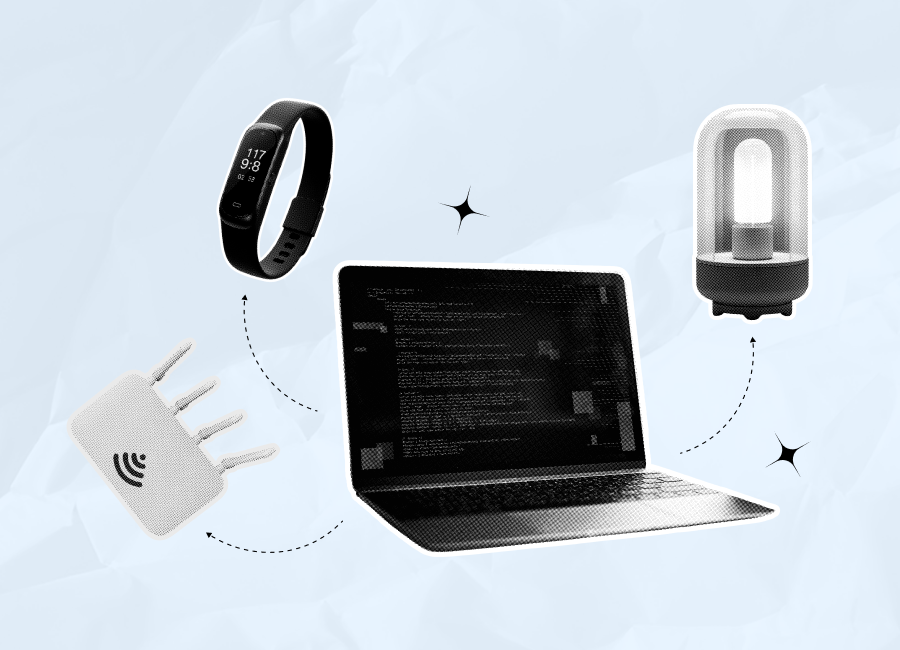When creating a mobile application, you’ll need to make a series of crucial decisions, from the basic concept to how the app will be positioned and its target audience. Then there’s another very important choice, that of your tech stack for mobile app development. In this article, we’ll discuss the most widely used tools and technologies and what factors you should bear in mind when selecting the stack to be used for building your solution.
What is a technology stack for mobile applications?
A mobile app tech stack can be defined as a combination of platforms, tools, programming languages, frameworks, libraries, and APIs used for building a fully functional software product for mobile devices.
All the components included in a typical technology stack for mobile applications can be divided into several categories:
- Development platform. A platform that offers interfaces and libraries required for building an application.
- Front-end. Tools and technologies that go into the interface end-users will interact with.
- Back-end. Technologies that help the app and server interact.
Why is it important to find the best tech stack for a mobile app?
Our company has rich experience in providing custom mobile app development services. Over the years, we’ve noticed that a lot of non-tech specialists underestimate the significance of selecting the appropriate stack for building a software solution.
Picking the right mobile app technology stack is much more important than you may think.
By making a good choice, you can:
- optimize the development process;
- reduce development costs;
- ensure faster time-to-market;
- make your application scalable and flexible enough for future updates; and
- facilitate further support and maintenance of your app.
Factors to consider when choosing a mobile app tech stack
As all software solutions are different, approaches to mobile app development, as well as the chosen mobile technology stack, can’t be the same. You may have already launched an app and been satisfied with it, but that doesn’t mean that you can use just the same tools and technologies for your next project. First of all, any tech stack for mobile app development needs to correspond specifically to the desired functionality of your solution. That’s why, as a rule, the final list of technologies to be used is defined in close cooperation with developers who will work on your project and be responsible for building your app’s features.
Here’s a list of the most important criteria to consider for choosing the best tech stack.

- Compatibility. Learn whether the technologies under consideration will be supported by the devices of your target group. You should be careful with deploying the very newest technologies, as often they won’t be supported by older versions of mobile operating systems.
- Popularity of technologies. It’s also important not to opt for very rarely used technologies, as you may face problems finding experts who will have relevant skills and knowledge.
- Scalability. You need to choose technologies that will be able to support the stability of your system architecture amid the growing traffic and load on your app. You’ll also want to ensure that it’s possible to enrich your application with new features and updates without having to rewrite the whole code.
- Security. This should be a top priority for your development team. Most commonly used mobile technologies have security features. By selecting properly documented technologies, developers will know how the app's protection will be ensured.
- Complexity. It’s vital to opt for tools that will be easy to work with. This allows developers to create more advanced and sophisticated functionality. Secondly, a tech stack that’s easy to work with reduces development time and costs.
Do you have an idea for a mobile app?
With our rich expertise in building excellent mobile software products of different types, you can be sure we’ll be able to help you!
Mobile technology stack for native apps
Let’s start with a basic question: what is a native mobile application? It is a mobile software solution built for a specific operating system and not compatible with devices with a different OS.
Such applications have a high level of security and seamless performance. Their reliability, great UI/UX opportunities, as well as full access to hardware features (like GPS, microphone, or camera), make this type of mobile app a top choice for many businesses that are planning to launch their own solution.
What technologies are typically used for building mobile apps for iOS?
Programming language. There are two commonly chosen options: Swift and Objective C.
Swift is an open-source language and is actively evolving. The number of developers who work with it is also growing. It is a comparatively simple programming language. A lot of developers who initially worked with other languages say that many things are intuitively clearer in Swift.
Objective C, an object-oriented programming language, is also said to be rather straightforward to learn. It has function-rich libraries and provides wide possibilities for building advanced functionality for iOS apps.
Integrated development environments (IDE). Xcode is one of the most popular IDEs used for creating iOS apps. It offers Git repository support, has well-developed documentation, and offers a series of useful features and tools. For example, developers can use a built-in testing engine and a source code editor that allows them to efficiently transform and refactor the written code. The fact that there are no fees for using Xcode is another benefit.
Tech stack for Android app development
Programming language. Among the languages widely used today, the most common are Kotlin and Java.
The computing language Java is used not only for creating Android apps but also for building big data solutions and web products. Thanks to the availability of various open-source tools and libraries compatible with Java, development and deployment time can be greatly reduced.
Though Kotlin is younger than Java, it already has a well-developed ecosystem. It is also suitable for multi-language development. It has an effective and clear syntax, which makes it possible to solve the set tasks with fewer code lines in comparison to Java.
IDE. Android Studio, which is available for free, is a good choice for building Android applications. It has a convenient visual layout editor, an advanced emulator for various features and configurations, as well as template-based wizards for numerous app components. There are also built-in profiling tools available for developers.
Technology stack for cross-platform mobile apps
Cross-platform app development is growing in popularity, because of its practicality. Instead of building separate apps for Android and iOS devices, it is possible to build one solution that will be compatible with different devices. Of course, there are some limitations, such as possible performance issues and difficulties with access to native hardware features. Nevertheless, thanks to shareable code, the time and costs of development can be reduced.
What frameworks are usually chosen for cross-platform solutions?
React Native is a popular open-source UI software framework offered by Meta Platforms. It has a wide range of libraries and can boast a big community whose members greatly contribute to the development of its ecosystem. One of the peculiarities of this framework is that it allows the direct compilation of its reusable components to native components of iOS and Android apps. Moreover, React Native components can be incorporated into code that was written earlier.
Flutter is an open-source UI framework created by Google. It provides a lot of freedom in customizing UI design and a hot reload feature. Thanks to this tool, experimentation, bug fixing, UI creation, and feature integration become faster and more convenient. To develop apps with Flutter, engineers use widgets that can be viewed as fundamental building blocks of these solutions. They are helpful for building various visual and functional components of an app, including but not limited to text, input fields, and buttons.
Tech stack for building hybrid mobile apps
Hybrid app development involves using web technologies to create mobile applications that will run on various platforms. Such projects are less expensive and time-consuming than native app development, but users may face a less native-like experience and slower performance.
A hybrid app can be also defined as a web app that gets access to certain native platform features and device hardware functionality (like camera, calendar, push notifications, etc.).
As a rule, for building hybrid apps, developers use web languages such as JavaScript, HTML5, and CSS, and one of the frameworks, such as Cordova or Ionic.
- Cordova is a framework that helps to wrap an application into a native container and use native device features. The framework offers a series of benefits, including a rich collection of native plugins and advanced debugging capabilities.
- Ionic is used for the same purposes as Cordova, and many developers prefer it. It is comparatively easy to learn, speeds up the development process, and enables simple testing and debugging.
Choosing a mobile app development tech stack at Cogniteq
Over 10+ years of working in the software development market, we’ve managed to find the best approaches to building innovative, feature-rich solutions of any complexity. We work only with the best tools and technologies, both time-proven and the most advanced, which allow us to cope with any task.
The tech tools we rely on in our work help us to build highly secure, scalable, and flexible mobile apps that can meet the strictest industry standards.
Instead of a final word
Carefully choosing your tech stack for mobile app development is much more important than many people think. Decisions related to the choice of technologies will greatly affect the whole project, including timeframes and costs.
What should you think about while choosing the best tech stack? Here are some questions you’ll need to answer.
- Will your future app be compatible with the mobile devices of potential users?
- Will you have developers who will be able to build and further support your application?
- Will it be possible to create all the desired features?
- Will it be possible to scale and expand your app in the future?
- Is it easy to work with the chosen tools?
It’s often challenging for non-tech specialists to make any decisions related to the choice of technologies. That’s why, when our clients turn to us with their ideas for mobile app development projects, we are always ready to provide assistance in choosing a tech stack. Our developers deeply study the requirements of the project to understand which tools will be most suitable for solving the set tasks.
If you are planning to launch a mobile application, don’t hesitate to contact us. We are ready to support you at any stage of your project: from the discovery phase to post-launch app support and maintenance.
FAQ
What is the best platform for mobile app development?
The choice should depend on the peculiarities of your project and the goals that you want to achieve with the launch of your mobile app. You can consider various options, such as React Native, Flutter, Xamarin, Unity, and others to decide which will be the most suitable.
How to choose the best tech stack for mobile app development
To pick the right tools and technologies for mobile app development, you’ll need to take into account various factors, including:
- the type of app (native, hybrid, cross-platform);
- features to be built;
- availability of developers with the relevant skills;
- security and scalability ensured by the chosen technologies; and
- the complexity of their use.










































